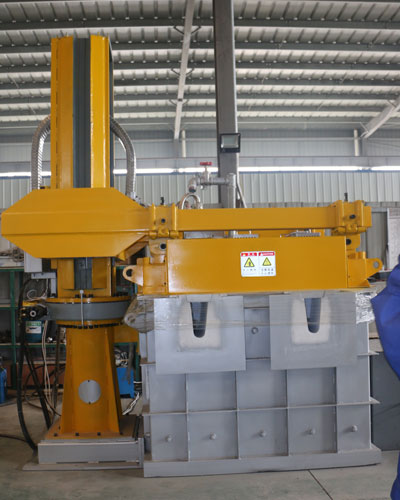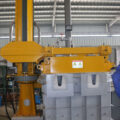With the continuous increase of investment cost, the competition in the foundry industry is becoming more and more fierce, and the profit margin is also becoming smaller and smaller. The foundry equipment needs innovative improvement in operational performance. As more and more automobile parts are made of aluminum alloy, strict quality standards and casting complexity have brought increasingly severe competition challenges to aluminum alloy foundry manufacturers. Degassing equipment for aluminum is very important for casting quality and mechanical properties. Although machined graphite rotors are considered to be the most advanced degassing tool, the standard rotor design and the failure to maintain the original shape due to rapid wear during the whole service life have brought about a great negative effect on the degassing efficiency.
Based on this consideration, Adtech has developed a degassing equipment for aluminum with advanced process and material technology. The design of the degassing rotor can produce better vortex, smaller bubble size and higher corrosion resistance, so as to prolong the service life and maximize the degassing efficiency. Considering the overall cost of users, this degassing rotor can significantly save cost, increase service life, improve metal quality, reduce degassing time and other operating benefits. The new rotor has been successfully developed and tested on a large scale. The rotating degassing efficiency is highly dependent on the rotor design. Reasonable design can produce smaller bubbles and better dispersion effect of inert gas in liquid metal.

The degassing equipment for aluminum is mainly blowing inert gas into molten aluminum to produce fine bubbles and distribute in the melt. Investigations from various casting and key users show that the performance of machined graphite shaft and rotor is satisfactory in the initial stage or in the assembly of new shaft / rotor; generally, the resistance of machined graphite shaft / rotor to erosion / oxidation is relatively low at operating temperature; the degassing efficiency deviation caused by corrosion of rotor components leads to instability of the results, which can only be achieved through the following steps: Degassing or increasing degassing cycle time to meet degassing quality (density) requirements; degassing efficiency is related to wear / deformation of rotor shape, and degassing times are limited; moderate thermal shock resistance – proper assembly and preheating by skilled operators are required during installation.







